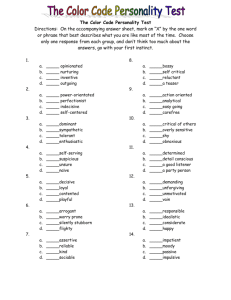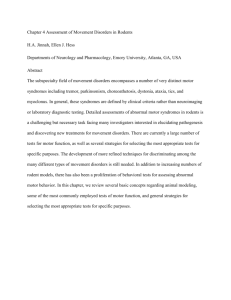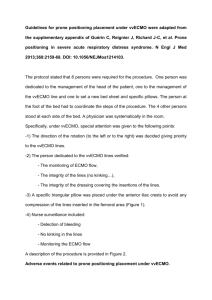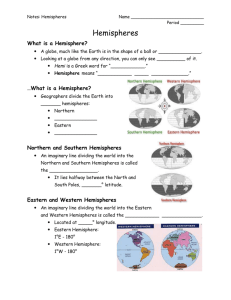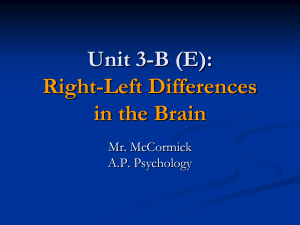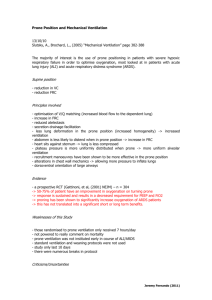THE MALE AND FEMALE BRAIN
advertisement
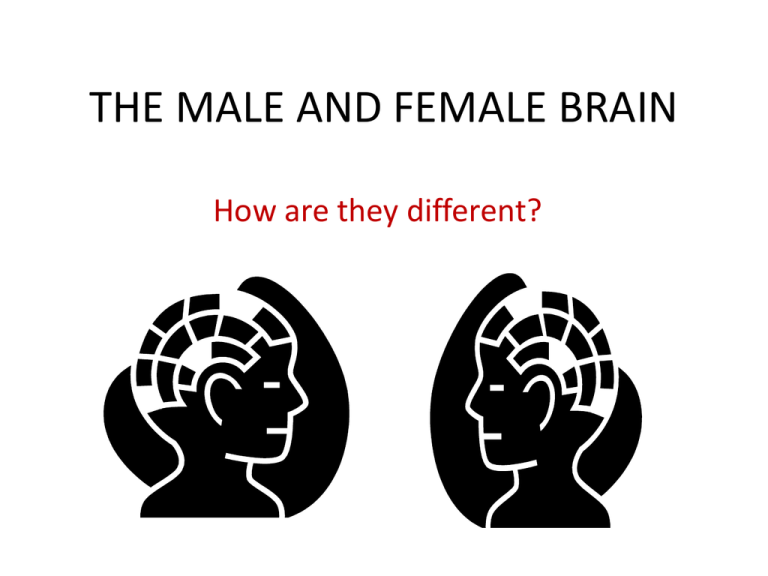
THE MALE AND FEMALE BRAIN How are they different? THE SENSES MALE FEMALE • More sensitive to • More acute sense of changes in levels of light smell • Better hearing MOTOR SKILLS MALE • More refined ability for target directed motor skills (gross motor coordination – especially in children) FEMALE • Faster at precision manual tasks (fine motor coordination – especially in children) THE PHYSICAL BRAIN MALE FEMALE 10% larger than the More dendritic female brain (about 100 connections between grams more brain cells than men tissue) Larger Corpus Callosum – More neurons in the greater use of both cerebral cortex hemispheres for processing information Larger Hypothalamus – helps regulate biological drives THE PHYSICAL BRAIN (Cont.) MALE FEMALE Larger Inferior Parietal Lobule – an area of mental mathematical abilities (perceptions of time, speed, and mentally rotating 3D figures Larger Amygdala (an area involved in regulating and controlling emotional reactions) Larger Limbic System (an area responsible for the generation of emotions) THE PHYSICAL BRAIN (Cont.) • The shape on the left is identical to which of the other three shapes? A B C B HEMISPHERE PREFERENCE AND UTILIZATION MALE More likely to have left brain hemispherical preference Uses more of left hemisphere for understanding language FEMALE More likely to have right brain hemispherical preference Uses both hemispheres for understanding language Speaks more words and can find words more readily than men A male brain when reading is really only active on the left hemisphere of the brain, while the female brain when reading is active on both sides of the brain. EMOTIONS MALE Uses more of left hemisphere to direct emotions to specific uses FEMALE More in touch with their feelings Greater ability to bond with others and be empathetic Better at human relations PROBLEMS MALE FEMALE More prone to developing ADHD, Autism disorders, and Tourette’s Syndrome More prone to Anti-Social disorders More prone to neuron disease: Example Amyotrophic lateral sclerosis More prone to developing Alzheimer’s Disease More susceptible to depression and related mood disorders such as anxiety Higher risk of suicide attempts More prone to developing anorexia INTELLIGENCE Despite the physical differences between the male and female brain and how males and females utilize their abilities there is NO IDENTIFIABLE DIFFERENCE in intellectual ability between the male and female brain.
